This weekend that's just gone was a bit like buses in the end as it was also the occasion of the tenth annual "Fantastic Films Weekend" at The Media Museum in Bradford which is always a highlight of the year. They showed loads of brilliant films, as well: "Hands of the Ripper", "Countess Dracula", "The Plague of the Zombies", "Horror Express", "The Beast Must Die", "Twins of Evil", "The Stone Tape" and the delectable Regan MacNeil in a midnight showing. What with Ladytron and Genesis Breyer P-Orridge, though, I didn't manage to get over there one fraction of as much as I would have liked. However, I did catch a rather colour drained print of one of my favourite films of all-time "Nothing But The Night" on their big Pictureville screen last night.
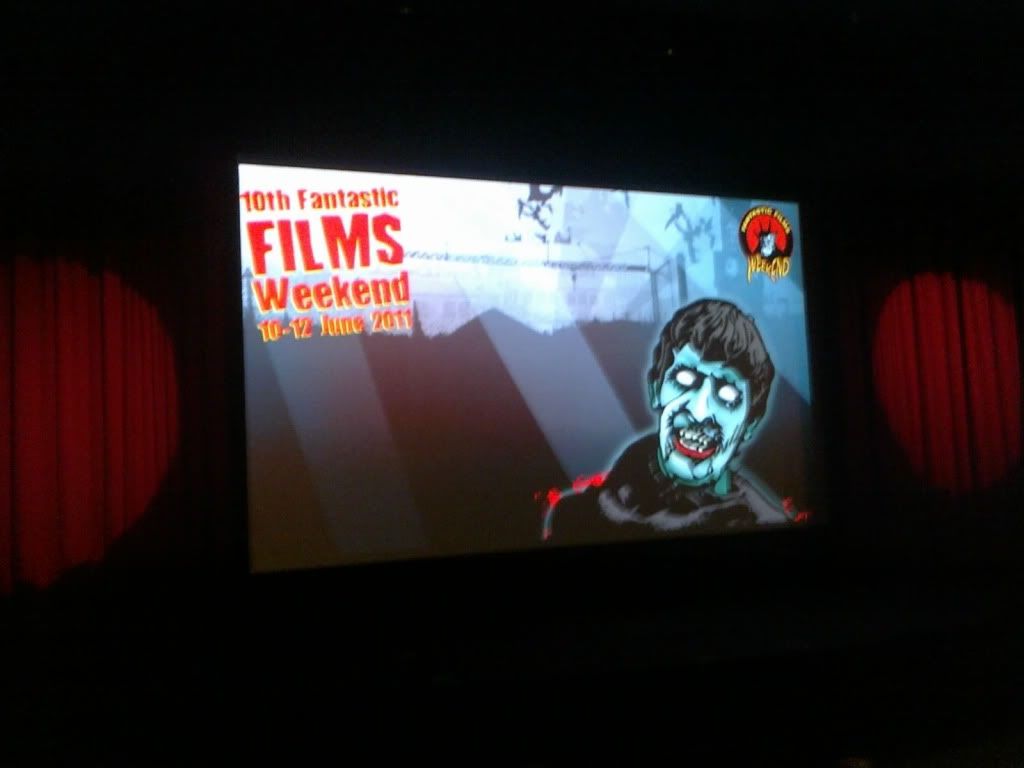
Now, for anyone who doesn't know, "Nothing But The Night", which has a stellar cast including Diana Dors, Peter Cushing, Georgia Brown, Keith Barron (David from the sitcom "Duty Free"), Fulton Mackay (Mackay from "Porridge") and a pubescent Gwyneth Strong (Cassandra from "Only Fools and Horses") was the first release from Charlemagne Productions, the company set up by Christopher Lee who also stars. Apparently, it was so named because his family could trace their lineage back to this eighth century French king, would you believe?
In spite of all of who appear, though, I'm afraid that, whenever I watch this film, I only have eyes for Ms. Dors who is stupendous in the role of Anna Harb, an ex-prostitute who has done time in Broadmoor for a triple murder, now earns a living as a fortune teller and drives around in a blue and white car with astrological symbols on the side and a sinister black cat, a bit like the one on the firework boxes, on her bonnet and rear end. She storms around in what seems like a permanent rage for the first half of the film, barging her way past people in hospital corridors and snapping at everyone she meets and, in the latter half, crawls helplessly but valiantly like a wounded animal (dressed in a red leather coat and auburn wig) through rough terrain as she tries to evade capture by Tracy Truncheon in what seems to be a prefiguration of Dawn Davenport in "Female Trouble". I've often wondered if John Waters caught a showing of "Nothing But The Night" (a.k.a. "The Devil's Undead", a.k.a. "The Resurrection Syndicate") when dreaming up scenes for Divine a year later.

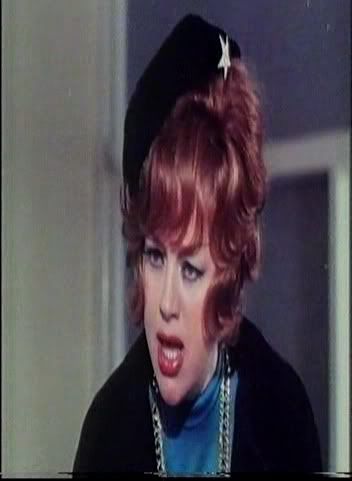
Anyway, to the plot - unsurprisingly, given her mother's track record, the Harb child (Strong) has had her name changed - to Mary Valley - and has been taken into the care of the charitable Van Treylan Trust with whom she lives an idyllic and privileged life in a huge cliff top mansion on the Scottish isle of Bala. However, as the film progresses, it emerges that the wealthy benefactors who take in such children don't have the altrusitic motives one might at first have expected and, as they begin to get bumped off in freak accidents or what appear to be suicides, the plot thickens.
In one such "accident", Mary, who was leading what looks like an amphetamine-fuelled chorus of "Ten Green Bottles" in the aisle of a coach when it crashes, lands up in hospital and starts to babble about being trapped in a fire which no-one can fathom out when she could have experienced. To cut a long story short, the Van Treylan lot, in a bid to achieve immortality of a sort, have been experimenting on the children in their care, using their remote hideaway as a place to implant parts of their brains, and therefore memories and personalities, into their wards. This achieved, they are ready to shuffle off and let the youngsters take over.
However, as the dastardly goings on start to be detected, first by Mary's doctor (Keith Barron), who gets a hat pin skewered into the side of his head for his troubles, and, later, by the more scientific Sir Mark Ashley (Peter Cushing), who seems to slice up pieces of liver and rump steak and squeeze them into test tubes to reach his conclusions, Dors is brought onto the scene by a meddling and gutsy journalist played by Georgia Brown. Then, in an attempt to regain "the kid", and now chief suspect in the hunt for the murderer of Dr. Haynes (see above), she heads up to Scotland and the Van Treylan mansion in the aforementioned car which she, unfortunately, has to abandon on a ferry so we never get to see it again.
In the meantime, her daugher is preparing her birthday party, a cliff-top bonfire with fireworks and this is where the film reaches its denouement with the children, now dressed in the scaled-down, antiquated attire of their elderly predecesors, gleefully watching the innocent Anna Harb, who they had earlier captured and turned into their guy, become engulfed by the flames. Christopher Lee almost suffers a similar fate, too, being tied up by the children and dragged towards the fire in a sinister variation on tug-of-war and, as this goes on, the soul of Helen Van Treylan speaks through Mary Valley, explaining all that's gone before in the belief that he'll take his knowledge of her machinations to the grave. However, just in the nick of time, Cushing arrives and, as the precociously dressed Mary laughs, "You're going to burn! Ha, ha, ha! You're going to burn!", his helicopter fans the flames and up goes her frock, causing her to dash to the cliff edge and jump to her death, her plan now foiled. Then, in a scene which would never be filmed in today's climate, like lemmings, the other children follow suit, toppling over one by one, and we watch their body's spiral down towards the rocks and water below just before the credits begin to roll.
In the meantime, her daugher is preparing her birthday party, a cliff-top bonfire with fireworks and this is where the film reaches its denouement with the children, now dressed in the scaled-down, antiquated attire of their elderly predecesors, gleefully watching the innocent Anna Harb, who they had earlier captured and turned into their guy, become engulfed by the flames. Christopher Lee almost suffers a similar fate, too, being tied up by the children and dragged towards the fire in a sinister variation on tug-of-war and, as this goes on, the soul of Helen Van Treylan speaks through Mary Valley, explaining all that's gone before in the belief that he'll take his knowledge of her machinations to the grave. However, just in the nick of time, Cushing arrives and, as the precociously dressed Mary laughs, "You're going to burn! Ha, ha, ha! You're going to burn!", his helicopter fans the flames and up goes her frock, causing her to dash to the cliff edge and jump to her death, her plan now foiled. Then, in a scene which would never be filmed in today's climate, like lemmings, the other children follow suit, toppling over one by one, and we watch their body's spiral down towards the rocks and water below just before the credits begin to roll.
What a film!! They showed it on the Friday, too, and its director, Peter Sasdy, was on hand to introduce it and to answer questions. If I'd been there, I'd have shaken his hand.
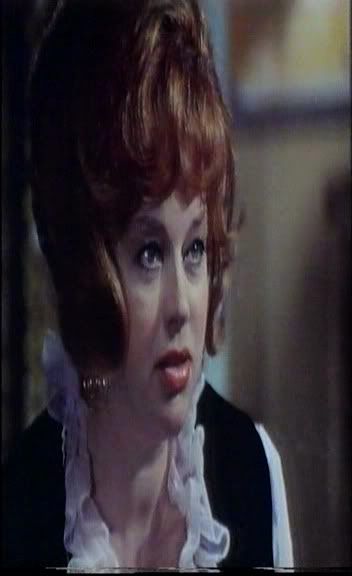
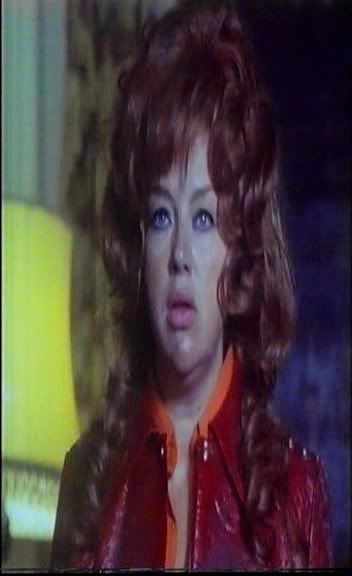
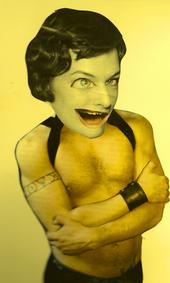
No comments:
Post a Comment